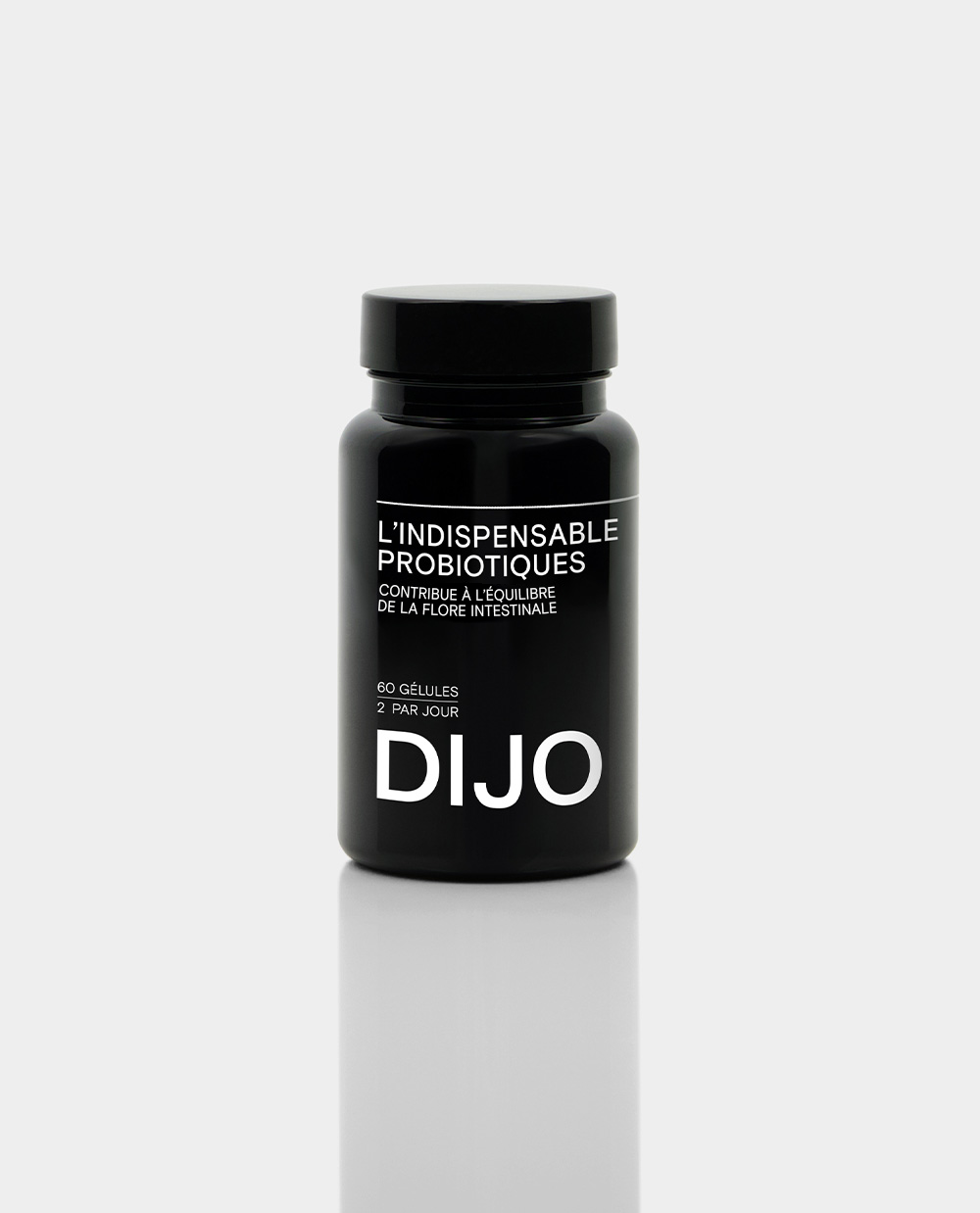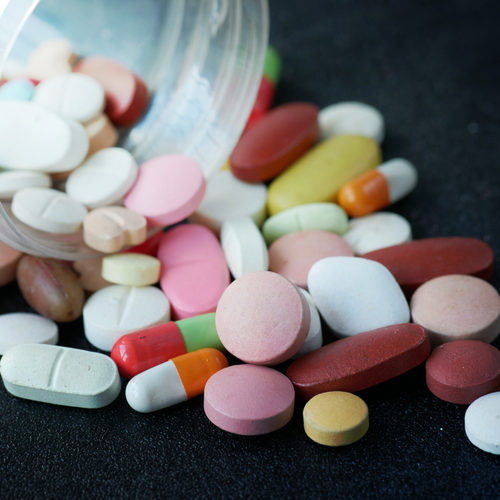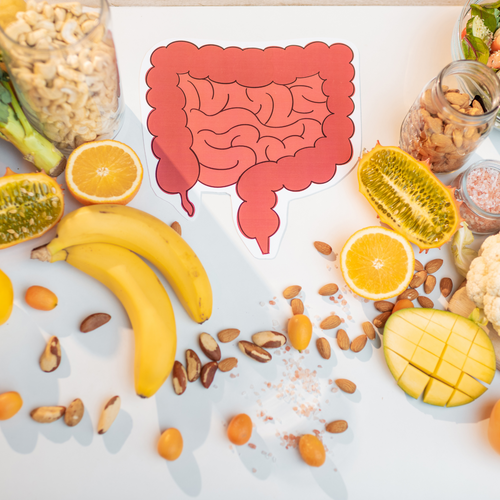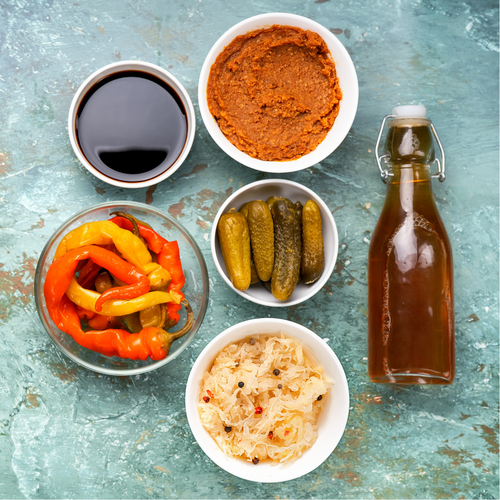Food is ingested and digested using juices and enzymes to allow the assimilation of its nutrients, before the rest of the food is evacuated. Let's take a look at the stages involved.
#1 - Ingestion
Digestion begins as soon as food enters the mouth, but even a little before, when we see or smell food! These visual and olfactory stimuli trigger the process of salivation, a valuable phenomenon for digestion. Indeed, saliva contains enzymes, amylases, which will begin the digestion of carbohydrates as soon as chewing. The mechanical action of the teeth is also essential: well-ground food is more easily digested. This is one of the reasons why it is important to take your time and chew your food well, because it automatically facilitates digestion. By lingering over chewing, we also promote the feeling of satiety, because it triggers the production of histamine in the brain, a neurotransmitter that modulates feelings of satiety.
#2 - Journey to the stomach
The food bolus travels to the stomach through the esophagus, whose opening and closing is controlled by sphincters. It is driven by peristalsis: the set of muscular contractions that allow the food bolus to progress to the stomach, even when lying down! However, we do not recommend this, to avoid any risk of gastric reflux.
#3 - Acid cocktail in the stomach
Once in this organ, the food will undergo a more robust treatment combining mechanical and chemical processes. On the one hand, the stomach muscles perform a mixing, while the secreted gastric juices attack the food mass to transform it into slurry called “chyme”. The quantities of gastric juices are also around 2 liters per day! Being composed mainly of hydrochloric acid, the juices can cause heartburn when they are produced in excess. Fortunately, the walls of the stomach are most of the time well preserved from this corrosive substance thanks to the mucus it secretes. Once the food bolus is reduced to the state of chyme, it heads towards the small intestine.
#4 - The small intestine: the marathon
This is the longest part of the digestive tract, measuring between 5 and 8 meters, but it is above all the main site of digestion: it is there that food is assimilated and made usable by the cells of the body. The wall of this organ has an additional particularity compared to the other organs of the digestive tract: it is composed of numerous folds, called villi, which considerably increase the surface area for absorption of nutrients. Upon entering the small intestine, the chyme will still be watered with digestive juices, in particular those intended for the breakdown of lipids. But throughout the organ, it will be deprived of the nutrients that compose it to pass into the blood or lymphatic circulation.
#5 - Drying in the colon
The few constituents that survived the small intestine, namely fiber, certain proteins, and water, will be able to continue their journey in the large intestine, also called the colon. This is much smaller, between 80 and 150 cm, and surrounds the small intestine. It is in this organ that the remains of chyme, still liquid, are transformed into a solid mass: stool. To give you an idea: out of 1.5 L of ingested residue, only 150 g of stool are formed, by dehydration, then evacuated. Bacteria play an essential role in the colon, digesting the last nutrients, fermenting plant fibers, and putrefying protein residues. They also produce vitamins and fatty acids that provide energy and benefits.
#6 - Rectum and anus: the finish line
The rectum is the last segment of the digestive tract; it resembles a bulb. It is once the feces have reached this stage that we feel the need to have a bowel movement. The anus represents the last obstacle to bowel movements; it is controlled by two sphincters.
In reality, we only evacuate 5% of our food. Through various mechanisms, the body uses a lot of our food to transform food into nutrients that serve as fuel for all organs. Digestion is therefore a crucial process for our health, but these days more and more people are affected by digestive problems that impact their overall health. These are often synonymous with an unbalanced microbiota. Indeed, the probiotic bacteria that live in our intestines are responsible for many phenomena related to digestion. For example, some bacteria are responsible for increasing the assimilation of nutrients, others facilitate the breakdown of nutrients, and others participate in maintaining healthy intestinal permeability. One of the most studied therapeutic avenues at the moment therefore concerns probiotics, these small bacteria that already populate our intestines, but which we have difficulty maintaining naturally due to our current lifestyles. It is now increasingly accepted that probiotic supplementation helps improve many intestinal disorders.
Sources:
[1] Boudet, S. (2013). From initial conceptions to scientific knowledge: the case of digestion. Doctoral thesis: University Institute for Teacher Training. 95 p.
[2] The secret life of our intestines. Femina version. October 2019.
[3] Wilkins, T., & Sequoia, J. (2017). Probiotics for Gastrointestinal Conditions: A Summary of the Evidence. American family physician , 96 (3), 170–178.
[4] Helander, H.F., & Fändriks, L. (2014). Surface area of the digestive tract - revisited. Scandinavian journal of gastroenterology , 49 (6), 681–689. https://doi.org/10.3109/00365521.2014.898326





















